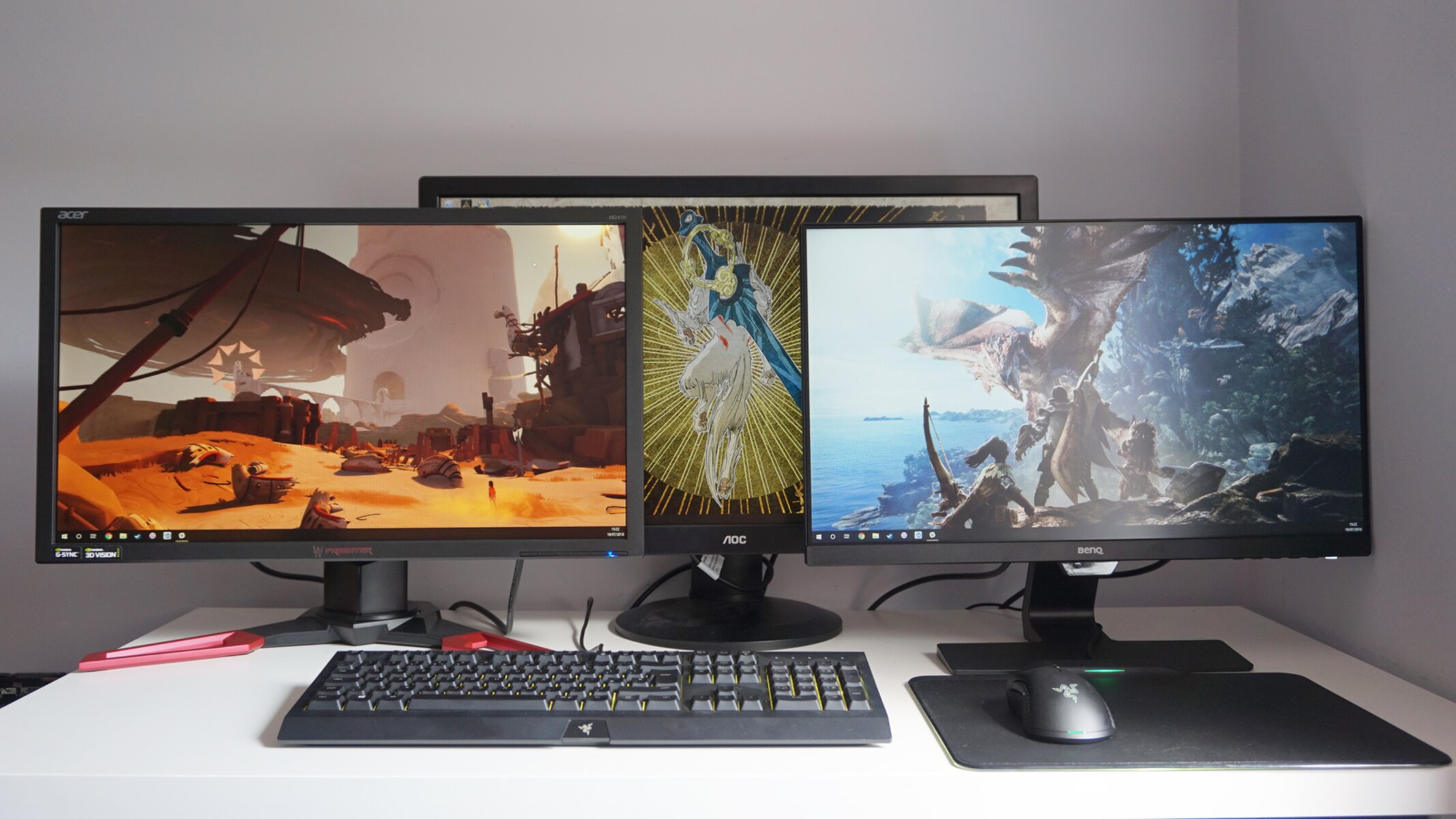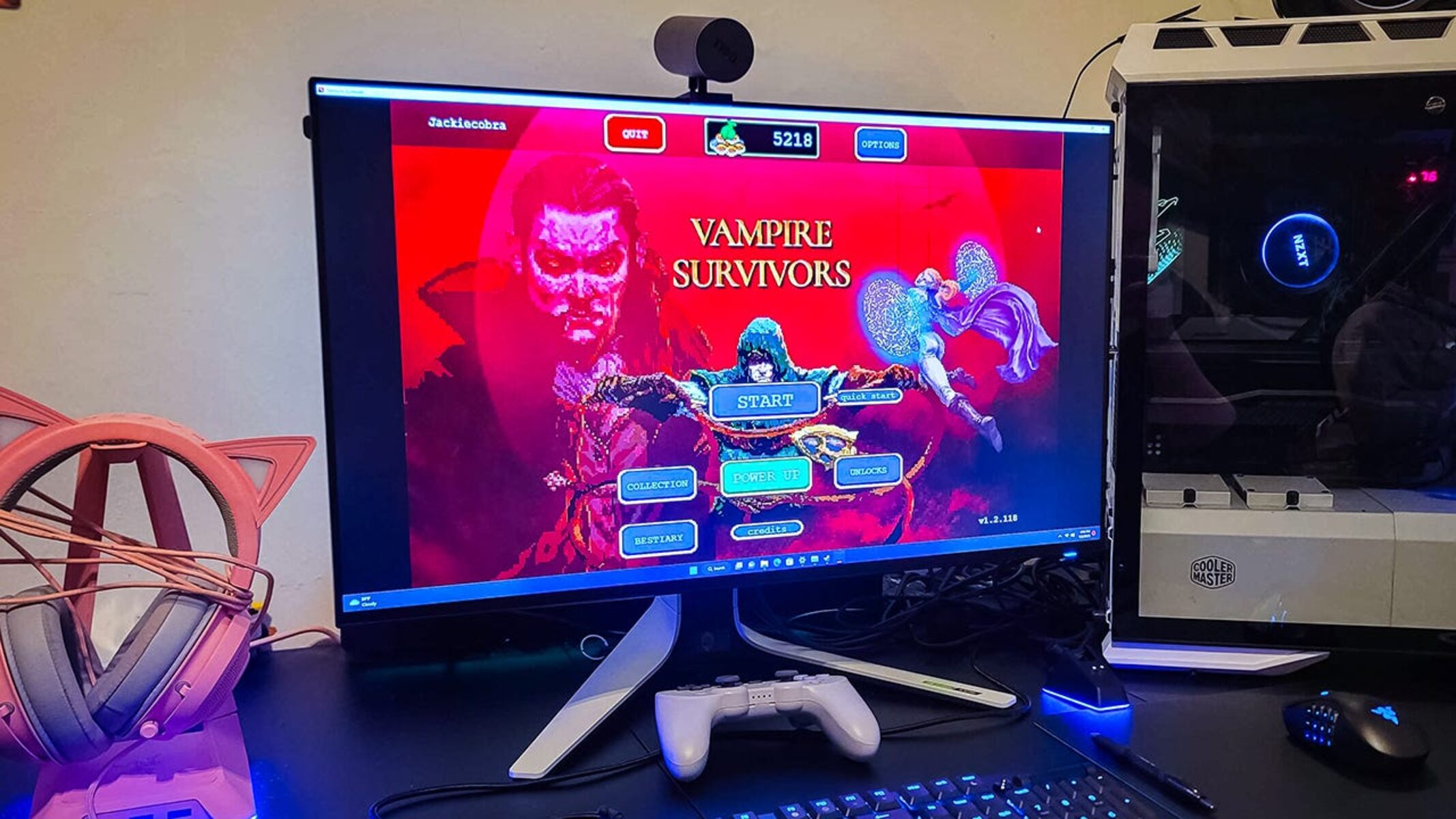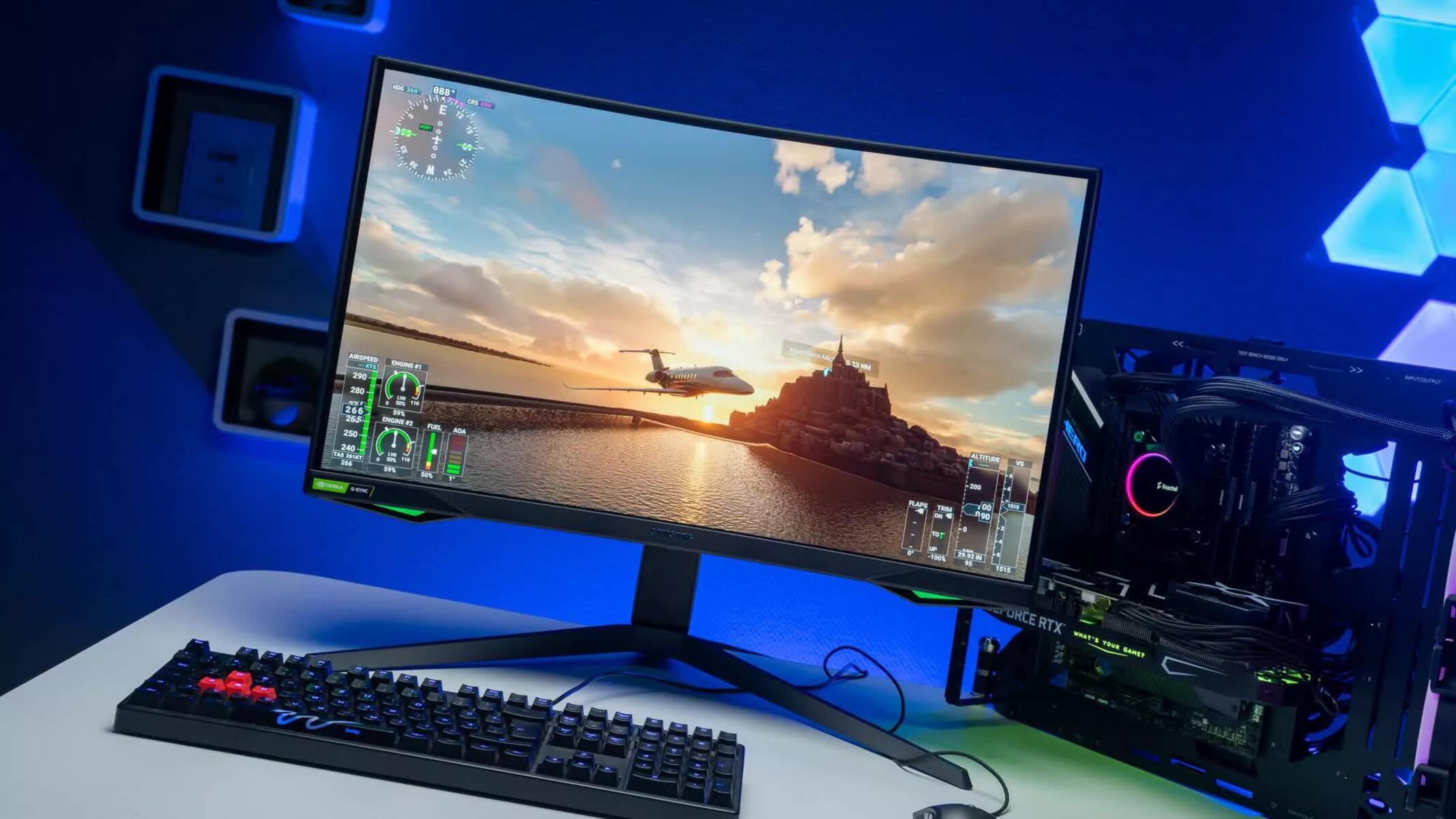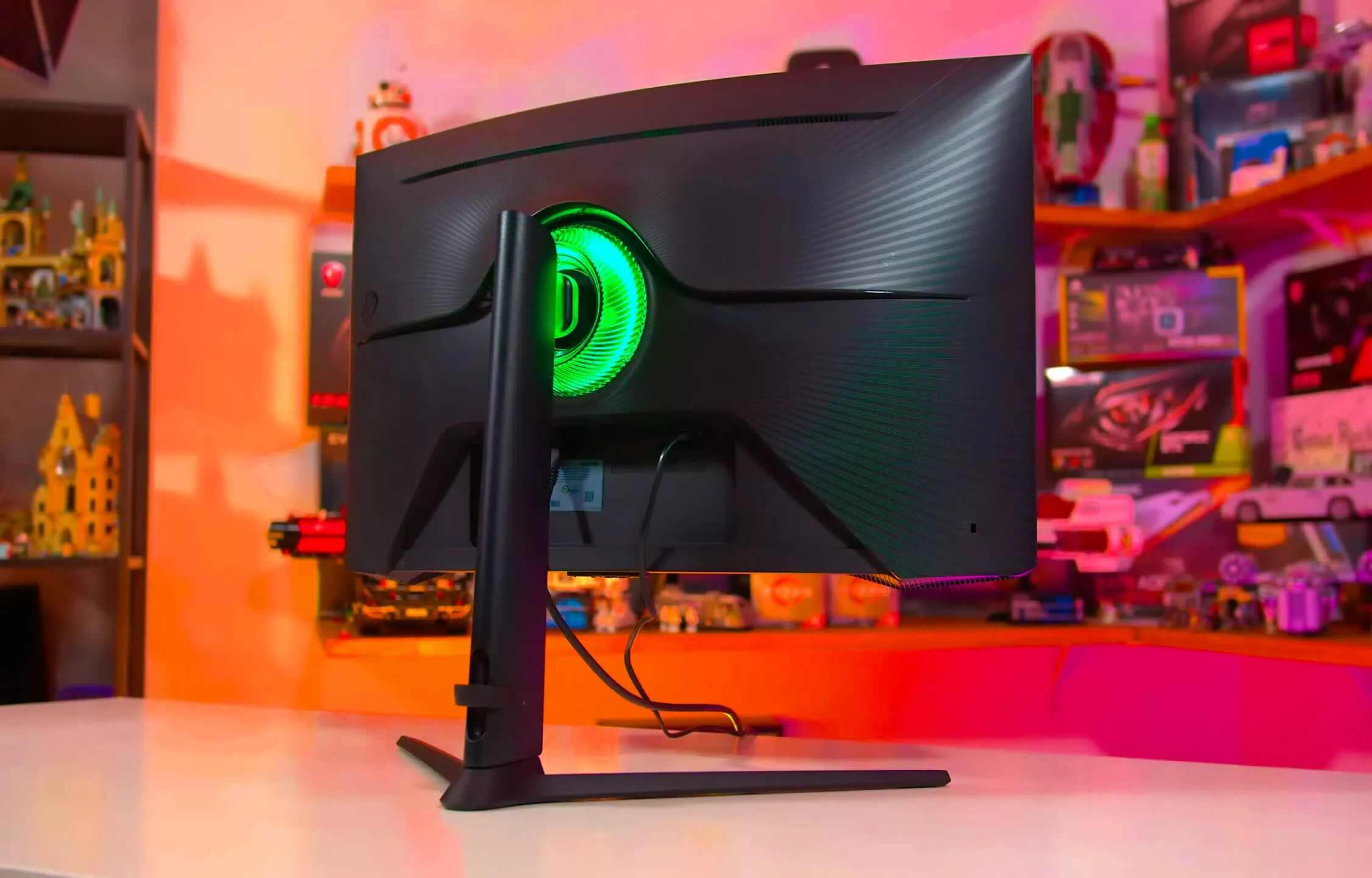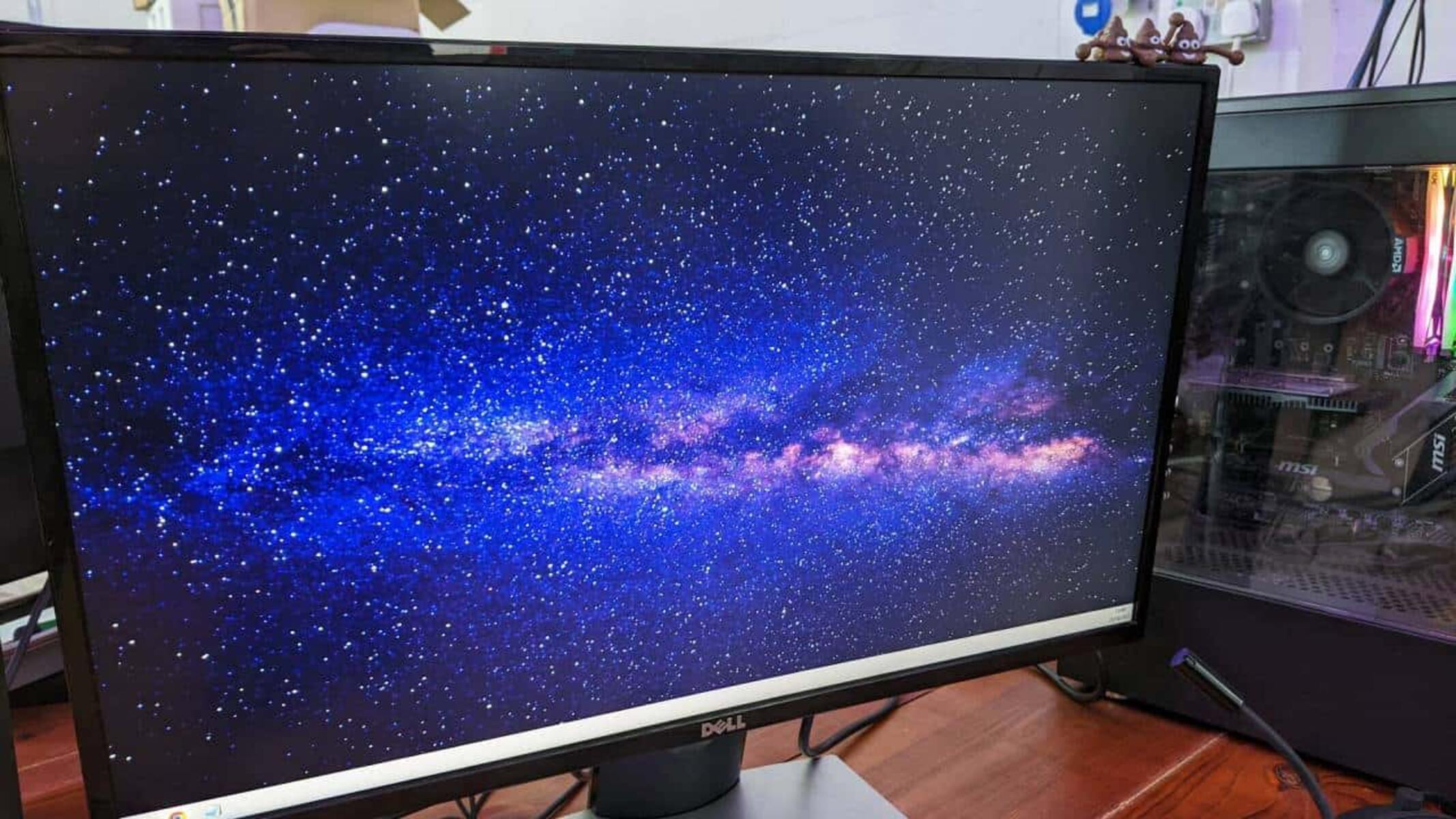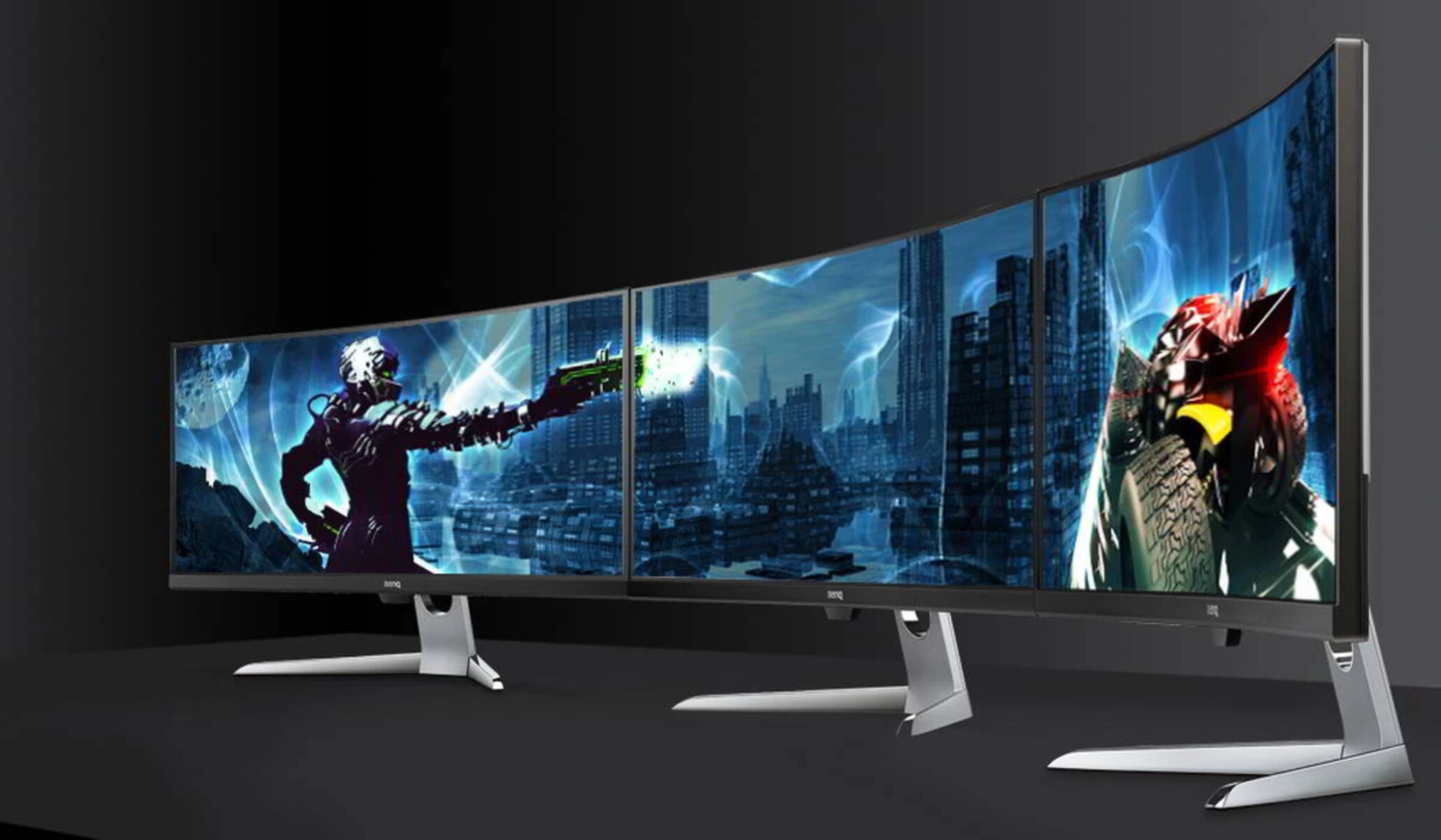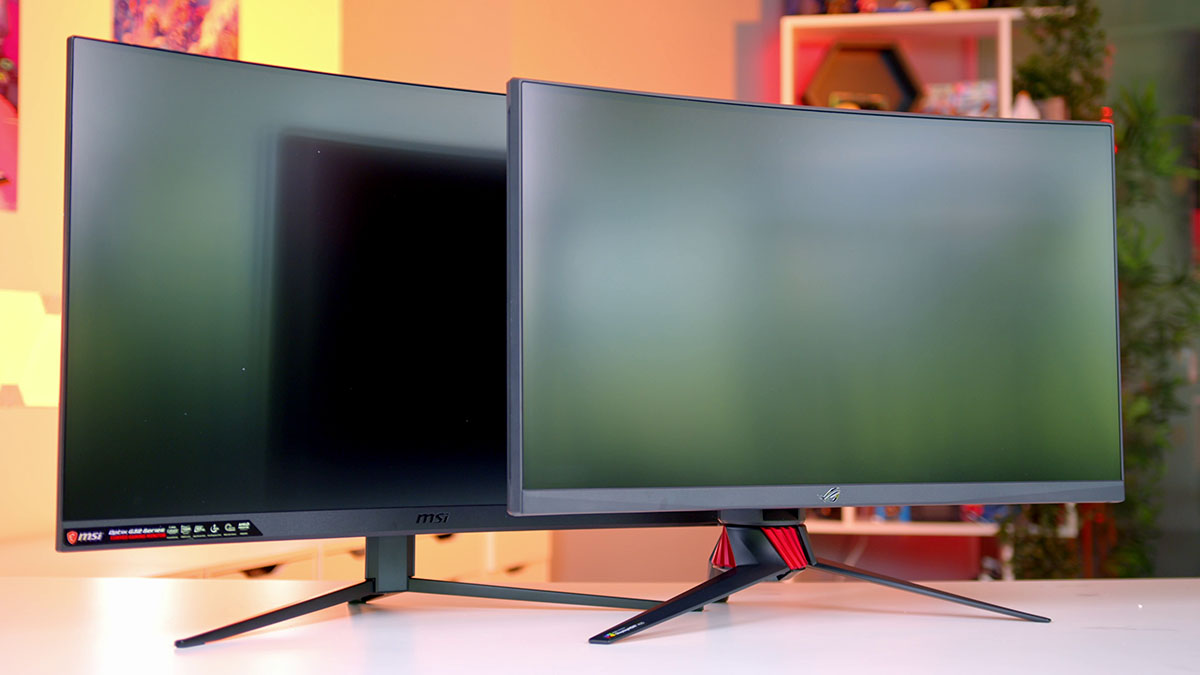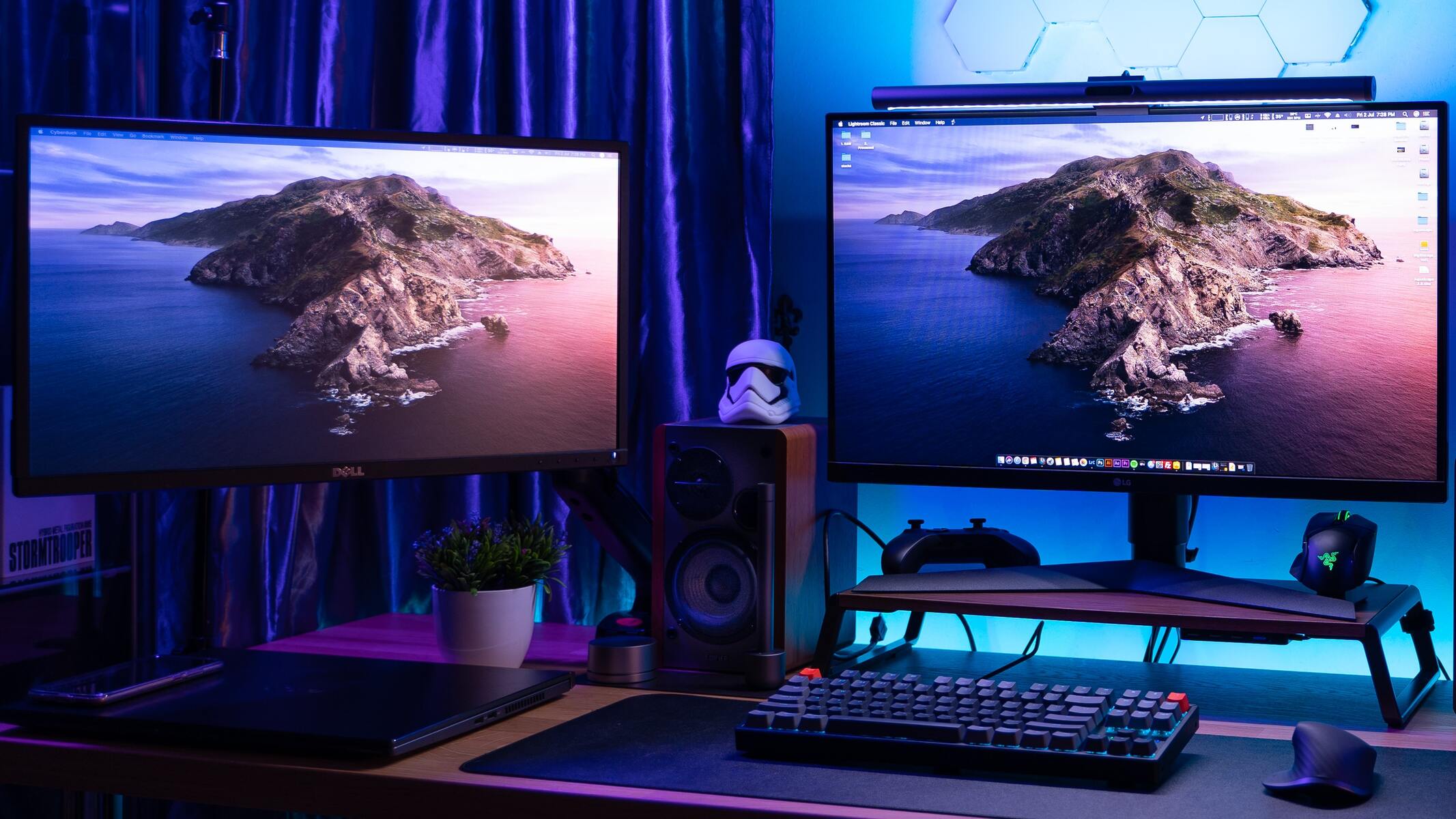Introduction
Gaming has become an increasingly popular pastime, and gamers all over the world are constantly searching for ways to enhance their gaming experience. One crucial component that can significantly impact gameplay is the choice of a gaming monitor. While there are several factors to consider when selecting a gaming monitor, one of the most important aspects is the type of panel used in the display.
There are several different types of gaming monitor panels available on the market, each with its own unique characteristics and advantages. Understanding these panels and their impact on gaming performance is essential for making an informed decision when purchasing a gaming monitor.
In this article, we will explore the three main types of gaming monitor panels: TN (Twisted Nematic), IPS (In-Plane Switching), and VA (Vertical Alignment). We will delve into the features and benefits of each panel type, as well as the factors to consider when choosing the best panel for your gaming needs.
By the end of this article, you’ll have a better understanding of the different types of gaming monitor panels and be equipped with the knowledge to make an informed decision that will enhance your gaming experience.
Understanding Different Types of Gaming Monitor Panels
When it comes to gaming monitor panels, there are three main types to consider: TN (Twisted Nematic), IPS (In-Plane Switching), and VA (Vertical Alignment). Each panel type has its own set of characteristics that affect factors like response time, color accuracy, viewing angles, and contrast ratio. Let’s take a closer look at each of these panel types:
- TN (Twisted Nematic) Panel: TN panels are known for their fast response times, making them ideal for gamers who prioritize high refresh rates and smooth gameplay. These panels deliver rapid pixel transitions, minimizing motion blur and ghosting. However, TN panels generally have narrower viewing angles and poorer color reproduction compared to other panel types.
- IPS (In-Plane Switching) Panel: IPS panels prioritize color accuracy and wide viewing angles. These panels offer vibrant and accurate colors, making them suitable for gamers who value visual fidelity and immersive gaming experiences. Additionally, IPS panels typically have better color consistency across the screen. However, IPS panels tend to have slower response times compared to TN panels.
- VA (Vertical Alignment) Panel: VA panels strike a balance between TN and IPS panels. They provide better color reproduction and wider viewing angles compared to TN panels while offering faster response times than IPS panels. VA panels are known for delivering deep blacks and high contrast ratios, making them popular among gamers who appreciate rich and immersive visuals. However, VA panels can sometimes suffer from motion blur in fast-paced games.
It’s important to note that these panel types continue to evolve, with manufacturers constantly working on improving their technology. For example, newer iterations of TN panels, such as TN+Film and TN+Film 2, offer better color reproduction and wider viewing angles compared to traditional TN panels.
Now that we have a better understanding of the different gaming monitor panel types, let’s explore the key factors to consider when choosing the best panel for your gaming needs.
TN (Twisted Nematic) Panel
One of the most common types of gaming monitor panels is the Twisted Nematic (TN) panel. TN panels are known for their fast response times, making them a popular choice among competitive gamers who prioritize high refresh rates and smooth motion handling.
One of the main advantages of TN panels is their ability to deliver rapid pixel transitions, which helps minimize motion blur and ghosting. This is crucial for fast-paced games where quick reactions and precise movements are essential. Gamers will appreciate the responsiveness and fluidity that TN panels offer.
In addition to their fast response times, TN panels are also renowned for their affordability. Compared to other panel types like IPS or VA, TN panels tend to be more budget-friendly, making them an attractive option for gamers on a tight budget.
However, it’s important to note that TN panels do have some drawbacks. One significant downside is their limited viewing angles. TN panels have narrower viewing angles compared to IPS or VA panels, which means the image quality may degrade when viewed from side angles. This can result in color shifts or loss of detail.
Another aspect where TN panels lag behind is color reproduction. While recent advancements have improved color accuracy in TN panels, they generally still fall short compared to IPS panels. TN panels may struggle to display a wide range of colors accurately, resulting in slightly washed-out or less vibrant visuals.
Despite these limitations, TN panels continue to be a popular choice for gamers who prioritize lightning-fast response times and competitive gameplay. Their affordability makes them an attractive option, especially for gamers on a budget. However, if color accuracy and wide viewing angles are top priorities for you, you may want to consider other panel types like IPS or VA.
IPS (In-Plane Switching) Panel
In-Plane Switching (IPS) panels are widely regarded as one of the top choices for gaming monitor panels, especially for those who value color accuracy and wide viewing angles.
One of the biggest advantages of IPS panels is their exceptional color reproduction. These panels can display a wide range of colors accurately, resulting in vibrant and lifelike visuals. This makes IPS panels ideal for gamers who want to fully immerse themselves in the game’s stunning graphics and visuals.
Another standout feature of IPS panels is their wide viewing angles. Unlike TN panels that suffer from color shifts and loss of detail when viewed from side angles, IPS panels maintain consistent image quality across a wide range of viewing angles. This allows multiple viewers to enjoy the same high-quality visuals without any degradation.
IPS panels also offer better color consistency across the screen. This means that each part of the display will have consistent color accuracy, ensuring a more visually pleasing and immersive gaming experience.
While IPS panels excel in color accuracy and viewing angles, they do come with a trade-off in terms of response times. Compared to TN panels, IPS panels generally have slower response times, which can result in motion blur or ghosting, especially in fast-paced games. However, it’s worth noting that there are gaming-specific IPS panels available that have been optimized for faster response times to minimize these issues.
Another consideration with IPS panels is their higher price point compared to TN panels. The advanced technology and superior color reproduction of IPS panels contribute to their higher manufacturing costs, making them a more premium option. However, many gamers find that the enhanced visual experience offered by IPS panels is well worth the investment.
In summary, IPS panels are an excellent choice for gamers who prioritize accurate color reproduction, wide viewing angles, and a visually immersive gaming experience. Although they may have slightly slower response times and a higher price tag, the stunning visuals and color consistency that IPS panels offer make them an enticing option for discerning gamers.
VA (Vertical Alignment) Panel
Vertical Alignment (VA) panels are a popular choice for gamers seeking a balance between the fast response times of TN panels and the superior color reproduction of IPS panels.
One of the key advantages of VA panels is their ability to produce deep blacks and achieve high contrast ratios. This results in enhanced image quality and more immersive gaming experiences, especially in dark or atmospheric games where accurate rendering of black levels is crucial.
Additionally, VA panels offer good color reproduction, though not quite as accurate as IPS panels. They can display a wide range of colors with sufficient vibrancy, making them suitable for gamers who value rich and captivating visuals.
Another notable feature of VA panels is their wider viewing angles compared to TN panels. While not as extensive as IPS panels, VA panels offer better viewing angles, allowing multiple viewers to enjoy the same high-quality visuals without significant color distortion or degradation.
However, VA panels do have some limitations that gamers should be aware of. One of the main drawbacks is their relatively slower response times compared to TN and some IPS panels. This can lead to motion blur or ghosting in fast-paced games, potentially impacting gameplay. Nonetheless, advancements in VA panel technology have improved response times, making them a viable option for most gamers.
Price-wise, VA panels typically fall between TN and IPS panels. While they are generally more affordable than IPS panels, they tend to be slightly pricier compared to TN panels. However, the visual benefits offered by VA panels make them a great choice for gamers who are looking for a good balance between performance and budget constraints.
In summary, VA panels are an excellent choice for gamers who prioritize a balance between fast response times and vibrant visuals. With their deep blacks, high contrast ratios, and wider viewing angles, VA panels deliver immersive gaming experiences. While their response times may be slightly slower, the affordability of VA panels makes them an attractive option for gamers seeking a mid-range gaming monitor.
Factors to Consider When Choosing a Gaming Monitor Panel
When selecting a gaming monitor panel, there are several important factors to consider to ensure that you choose the panel that best suits your gaming needs. These factors will have an impact on your gaming experience and visual enjoyment. Let’s explore the key considerations:
- Refresh Rate and Response Time: The refresh rate refers to how many times the monitor can refresh the image on the screen per second, typically measured in Hertz (Hz). A higher refresh rate allows for smoother motion and reduces motion blur. The response time is the time it takes for a pixel to change from one color to another. A lower response time is preferable for fast-paced gaming, as it minimizes ghosting and blurring of moving objects.
- Color Accuracy and Viewing Angles: Color accuracy is important for gamers who want their games to be visually stunning, realistic, and immersive. IPS panels tend to have the best color accuracy, followed by VA panels, while TN panels have the least accurate colors. Viewing angles are also crucial, as wider angles ensure that the image quality remains consistent even when viewing from different positions.
- Contrast Ratio and Black Levels: The contrast ratio measures the difference between the darkest and the brightest points on the screen. A higher contrast ratio provides more depth and detail in the image. VA panels generally offer the best contrast ratios and black levels, resulting in more vivid and immersive visuals.
- Price and Budget Considerations: It’s important to determine your budget before selecting a gaming monitor panel. TN panels tend to be more affordable, while IPS panels are generally more expensive. VA panels fall somewhere in between. Consider what features and performance you prioritize and choose a panel that fits within your budget.
It’s also worth noting that technology is continuously advancing, and newer panel versions and variations may improve upon the limitations of previous generations. Researching and reading reviews can help you stay informed about the latest advancements and trends in gaming monitor panels.
Ultimately, the choice of a gaming monitor panel depends on your specific preferences and needs as a gamer. Consider the factors mentioned above, along with other personal preferences such as screen size, resolution, and connectivity options, to make an informed decision and enhance your gaming experience to its fullest potential.
Refresh Rate and Response Time
When selecting a gaming monitor, two important factors to consider are the refresh rate and response time. These specifications have a significant impact on the overall gaming experience, particularly in fast-paced and action-packed games.
The refresh rate refers to how many times per second the monitor can update the image on the screen. It is measured in Hertz (Hz). A higher refresh rate translates to smoother motion and reduced motion blur. Most monitors on the market offer a 60Hz refresh rate, but some gaming-specific monitors can go up to 144Hz or even 240Hz.
For competitive and fast-paced gaming, a higher refresh rate is highly recommended. The increased number of image updates per second provides a smoother display of fast-moving objects, giving gamers a competitive edge by reducing input lag and improving the overall responsiveness of the gameplay.
However, it’s important to note that the benefits of high refresh rates may be more noticeable in certain genres, such as first-person shooters or racing games, where quick reactions and precision are paramount. For other gaming genres, casual gamers, or those with a limited budget, a 60Hz refresh rate may suffice.
Response time is another crucial factor to consider. It is the time it takes for a pixel on the screen to change from one color to another. A lower response time, measured in milliseconds (ms), ensures that fast-moving objects in games appear crisp and clear, without noticeable blurring or ghosting. Response times below 5ms are generally considered excellent for gaming.
A slower response time can result in motion blur, which can be distracting and negatively impact gameplay. This is especially true in games where quick reflexes and precise movements are required. However, it’s worth noting that not all gamers may be as sensitive to response time as others, and the impact may vary depending on the individual’s perception and the specific game being played.
When choosing a gaming monitor, it’s important to strike a balance between a high refresh rate and low response time, depending on your preferences, budget, and the types of games you play most frequently. Gamers who prioritize competitive gameplay and fast-action titles may opt for a monitor with a higher refresh rate and lower response time, while casual gamers may find that a standard 60Hz refresh rate and moderate response time are sufficient for their needs.
In summary, the refresh rate and response time play key roles in determining the smoothness and clarity of the gaming experience. Consider your gaming preferences, the types of games you play, and your budget to make an informed decision and find the optimal balance between refresh rate and response time for an enjoyable gaming experience.
Color Accuracy and Viewing Angles
Color accuracy and viewing angles are important considerations when choosing a gaming monitor. These factors significantly impact the visual quality and overall gaming experience.
Color accuracy refers to how faithfully a monitor can reproduce colors, allowing games to be displayed as intended by the developers. Accurate colors result in more immersive and visually stunning gameplay, bringing the virtual worlds to life.
IPS panels are renowned for their exceptional color accuracy. They provide a wide color gamut and precise color calibration, resulting in vibrant and true-to-life visuals. IPS panels are ideal for gamers who prioritize visual fidelity and want their games to look as realistic as possible.
While IPS panels excel in color accuracy, VA panels also offer respectable color reproduction. VA panels generally provide rich and vibrant colors, although they may not be as accurate as IPS panels. TN panels, on the other hand, tend to have the least accurate colors, making them better suited for gamers who prioritize fast-paced gameplay over visual accuracy.
Viewing angles are another crucial factor to consider. This refers to the angle at which the screen can be viewed with minimal color distortion and loss of picture quality. IPS panels have the widest viewing angles, allowing for consistent image quality even when viewed from different positions or angles.
VA panels also offer good viewing angles, while TN panels have more restricted angles, leading to noticeable color shifts and diminished image quality when viewed from the side. Wide viewing angles are particularly important if you often share the screen for multiplayer gaming or if you sit at different angles while playing.
It’s worth considering the lighting conditions in your gaming setup as well. Ambient light and glare can affect the way colors are perceived on the screen. In such cases, an anti-glare coating or a matte display might be preferable to reduce reflections and improve visibility.
In summary, color accuracy and viewing angles are important factors to consider when choosing a gaming monitor. IPS panels offer outstanding color accuracy and wide viewing angles, ensuring a visually immersive experience. VA panels provide good color reproduction and respectable viewing angles, while TN panels prioritize fast response times over color accuracy and have more restricted viewing angles. Consider your gaming preferences, budget, and environmental factors to select the panel that best suits your needs and enhances your gaming enjoyment.
Contrast Ratio and Black Levels
When choosing a gaming monitor, considering the contrast ratio and black levels is essential, as these factors significantly impact the overall image quality and visual experience.
The contrast ratio measures the difference between the darkest and brightest points on the screen. A higher contrast ratio ensures more distinct differentiation between dark and light areas, resulting in images that appear more vibrant, detailed, and life-like.
Vertical Alignment (VA) panels are known for their superior contrast ratios. They typically offer deep blacks and excellent contrast ratios, making them ideal for games with dark or atmospheric scenes. VA panels deliver more immersive visuals, allowing for enhanced depth and detail in the shadows and darker parts of the image.
On the other hand, IPS panels generally have slightly lower contrast ratios compared to VA panels. However, the color accuracy and wide viewing angles provided by IPS panels compensate for this, making them popular among gamers who prioritize accurate color representation and consistent image quality at different viewing angles.
Twisted Nematic (TN) panels usually have the lowest contrast ratios among the three panel types. While they often offer faster response times, TN panels may have slightly washed-out blacks and limited contrast, resulting in less dynamic and immersive visuals.
It’s worth noting that the perceived contrast and black levels can also be influenced by the ambient lighting conditions in your gaming environment. Glare or excess ambient light can diminish the perceived depth of blacks and impact overall contrast. Proper consideration of lighting and using appropriate lighting control measures can help enhance the display and improve the perceived contrast ratios and black levels.
When choosing a gaming monitor, consider your gaming preferences and the types of games you play. If you value deep blacks, immersive visuals, and enhanced contrast, a VA panel might be the best choice for you. However, if accurate color representation and wide viewing angles are more important, an IPS panel would be a better fit. TN panels, while offering fast response times, may have lower contrast ratios and not provide the same level of visual depth and richness as VA or IPS panels.
In summary, contrast ratio and black levels play a vital role in determining the visual quality and immersion of your gaming experience. Consider the panel type that offers the desired level of contrast and black levels based on your gaming preferences and the types of games you play most frequently. By doing so, you can ensure that the images on your gaming monitor truly come to life and provide an enhanced gaming experience.
Price and Budget Considerations
When choosing a gaming monitor panel, price and budget considerations are important factors to keep in mind. The cost of a gaming monitor can vary depending on the panel type, features, and brand.
Twisted Nematic (TN) panels are generally the most budget-friendly option. They offer fast response times and are ideal for gamers on a tight budget or those who prioritize competitive gameplay over visual fidelity. TN panels can provide a decent gaming experience without breaking the bank.
In-Plane Switching (IPS) panels are considered more high-end and tend to be pricier compared to TN panels. They offer superior color accuracy, wide viewing angles, and excellent visual quality. IPS panels are ideal for gamers who value immersive and visually stunning gaming experiences, and are willing to invest in a higher-priced monitor.
Vertical Alignment (VA) panels fall somewhere between TN and IPS panels in terms of pricing. They offer good color reproduction, solid contrast ratios, and immersive visuals. VA panels are a great choice for gamers who seek a balance between performance and budget constraints.
It’s important to determine your budget range before beginning your search for a gaming monitor panel. Consider your gaming preferences and the features that matter most to you. If budget is a major consideration, TN panels offer a cost-effective solution, while IPS and VA panels may be more suitable for gamers with a higher budget and specific visual requirements.
Aside from the panel type, other factors such as screen size, resolution, and additional features like adaptive sync technology or HDR capability can also influence the price of a gaming monitor. Larger screens and higher resolutions typically come at a higher cost. Therefore, finding the right balance between display size, resolution, panel type, and budget will help guide your decision.
It’s also important to consider the long-term value and quality of the gaming monitor. While it can be tempting to opt for the cheapest option, investing in a higher-quality monitor that meets your gaming needs and provides a better visual experience can be more beneficial in the long run.
In summary, when considering price and budget for a gaming monitor panel, evaluate your gaming preferences, needs, and the features that are most important to you. Compare prices of different panel types and brands within your budget range to find the best value for your investment. Remember, striking a balance between cost and performance will help you select a gaming monitor panel that delivers an enjoyable gaming experience without compromising your budget.
Conclusion
Choosing the right gaming monitor panel is an essential decision for gamers looking to enhance their gaming experience. Understanding the different types of panels and the factors to consider when making a choice is crucial in finding the perfect monitor for your needs.
We explored three main panel types: TN (Twisted Nematic), IPS (In-Plane Switching), and VA (Vertical Alignment). Each type has its own strengths and weaknesses, whether it’s the fast response times of TN panels, the color accuracy and wide viewing angles of IPS panels, or the deep blacks and superior contrast ratio of VA panels.
When selecting a gaming monitor panel, factors such as refresh rate and response time, color accuracy and viewing angles, contrast ratio and black levels, and price and budget considerations should be weighed. Assessing your gaming preferences and requirements will help guide your decision towards the panel type that best suits your needs.
Remember that technology is always evolving and new panel versions are introduced regularly, so it’s important to stay informed about the latest advancements and trends in the market. Researching and reading reviews can provide valuable insights into the performance and features of different gaming monitor panels.
In the end, the choice of a gaming monitor panel is a personal one, influenced by factors such as gaming preferences, budget, and individual taste. By considering the key factors and understanding the trade-offs between different panel types, you can make an informed decision that will enhance your gaming experience and provide optimal visual quality.
So, take your time, evaluate your options, and choose the gaming monitor panel that will bring your games to life with stunning visuals and immersive gameplay.







